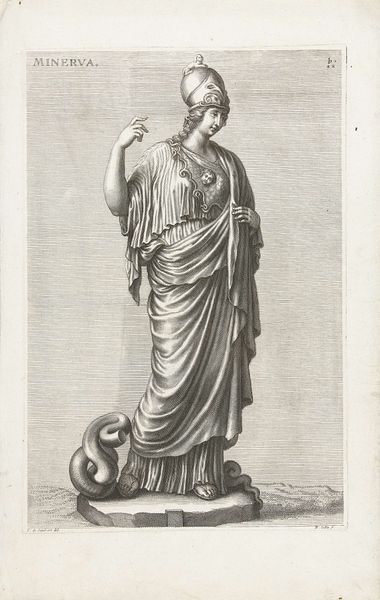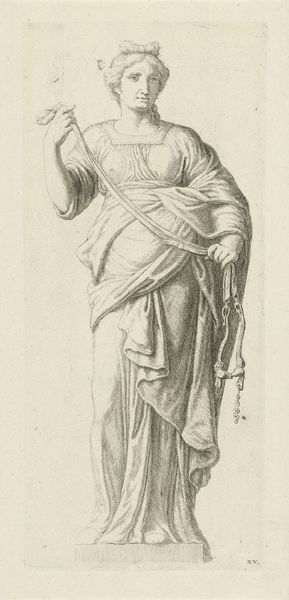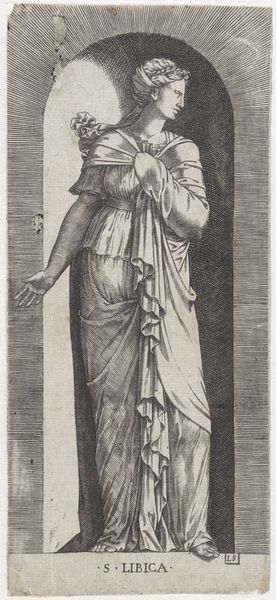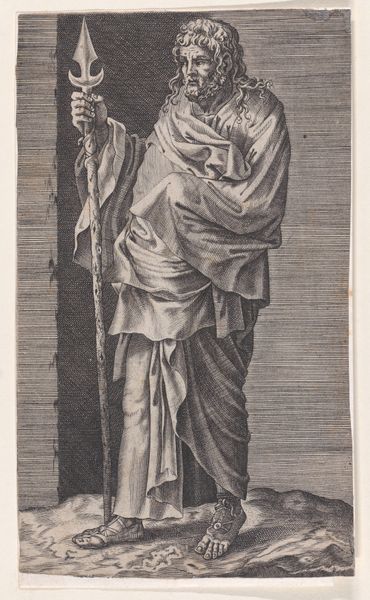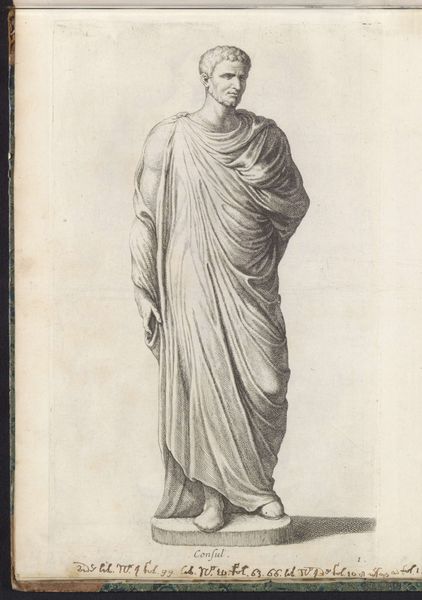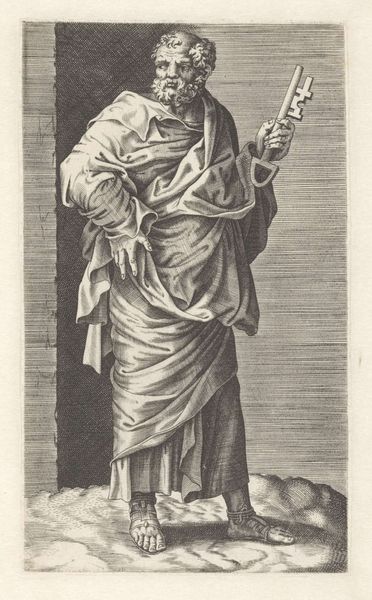
print, engraving
#
allegory
#
baroque
# print
#
old engraving style
#
classical-realism
#
figuration
#
history-painting
#
engraving
Dimensions: height 316 mm, width 204 mm
Copyright: Rijks Museum: Open Domain
This is Richard Collin’s “Minerva,” a print made sometime in the 17th century. The image was made by incising lines into a copper plate, inking the plate, and then running it through a press. Look closely, and you can see that the goddess Minerva and the surrounding niche are described with astonishing precision. The density of the lines determines the fall of light across the figure, and the texture of her drapery. Printmaking like this involved highly specialized labor. It was one thing to be a draughtsman, quite another to translate that skill into the graphic language of the burin. Prints like this, with their crisp and reproducible imagery, are often seen as a precursor to the modern, industrialized image culture. Yet it’s important to remember the hand-work and skill involved. This wasn't a fully automated process; it was a craft. And that is what gives the image its remarkable presence, even today.
Comments
No comments
Be the first to comment and join the conversation on the ultimate creative platform.
